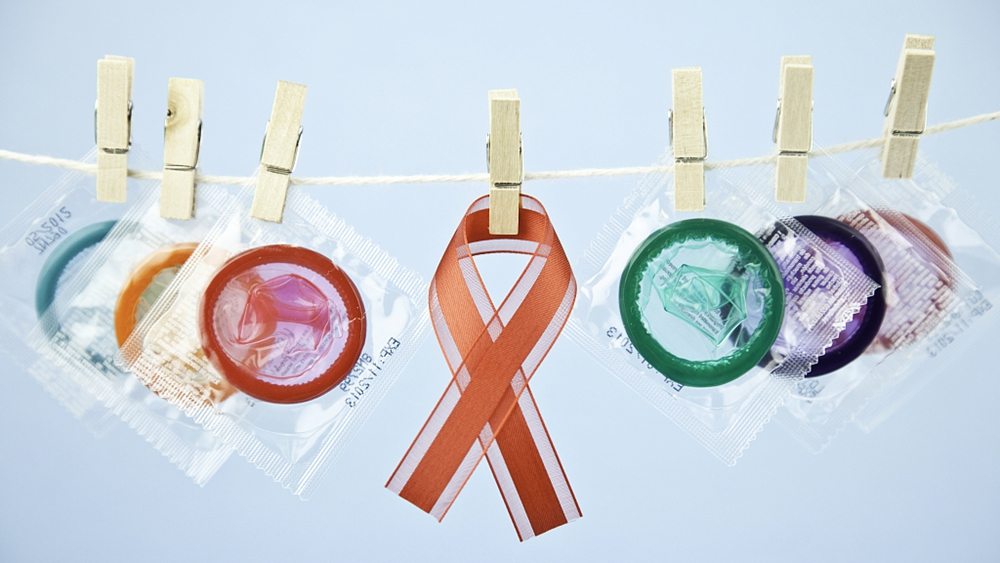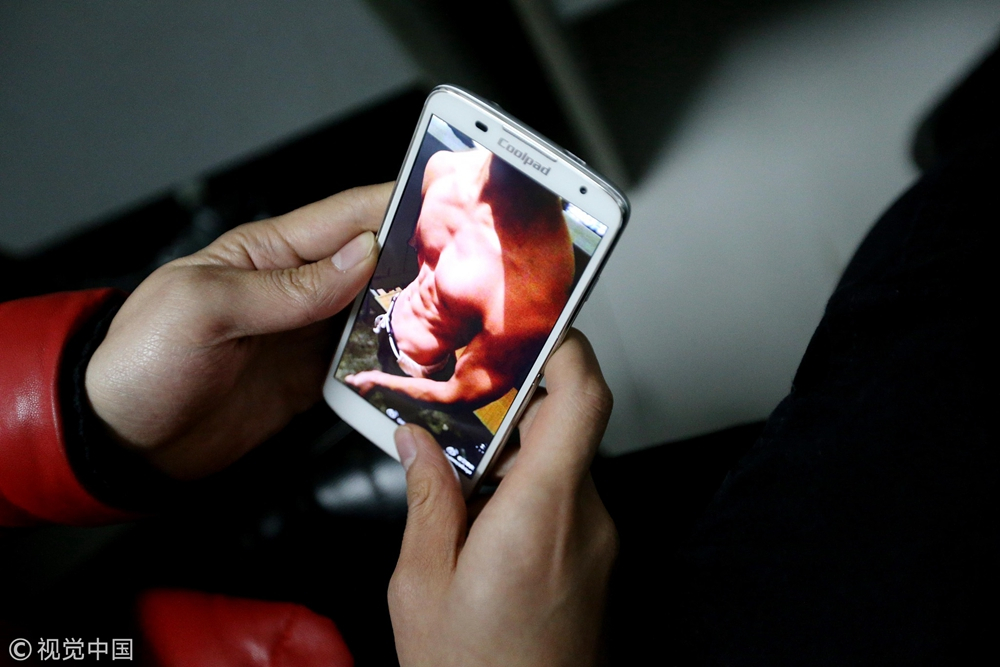
China
07:29, 30-Nov-2018
Moral panic won't help work to prevent AIDS
Updated
06:52, 03-Dec-2018
By Zhou Minxi

Health officials recently confirmed some of the Chinese public's worst fears about HIV/AIDS. Around 850,000 people in China are living with HIV and AIDS by the end of September, up 14 percent from last year, officials from China's National Health Commission said in a press conference last week, ahead of the 31st World Aids Day on December 1.
There are around 80,000 newly-infected people in China every year, according to a joint evaluation by Chinese and World Health Organization (WHO) officials.
A notable new trend is that the vast majority of new cases - at 95 percent - come from unprotected sex, said an official from the Chinese Center for Disease Control and Prevention (China CDC).
In the past, unsafe blood transfusions were the main cause of HIV infections in China.
Young people are now a high-risk group with a 35 percent year-on-year growth rate in new infections, according to the center. Some 3,000 students are infected every year, with more than 80 percent of them from sex between men.

An HIV positive gay man from Yuncheng, Shanxi Province, browses pictures of men on a dating site. He's kept his sexuality a secret from his family and is married to a woman. /VCG Photo
An HIV positive gay man from Yuncheng, Shanxi Province, browses pictures of men on a dating site. He's kept his sexuality a secret from his family and is married to a woman. /VCG Photo
"Hook-up" apps blamed
The timing of these new figures coincides with a fresh wave of fear-mongering on China's Internet. Shocking stories have been circulating about HIV-positive men allegedly infecting others on purpose by tricking women they had met online into having unprotected sex, provoking outrage and calls for stricter laws punishing the perpetrators.
Screen captures of private chats surfaced online purportedly showing one man boast about how he had "successfully" infected a female college student. Another was seen grimly suggesting that his victim deserved it as she wasn't raped. In all reported cases, the perpetrators used a dating app to meet their victims.
"Prostitution and sexual activities spurred by drug abuse and social networking apps have posed threats for HIV/AIDS control," said Han Mengjie, director of the National Center for AIDS/STD Control and Prevention with China CDC.
Alarmed by the surge in new HIV infections in the country - against a backdrop of declining global trend as shown by WHO figures - some media and social media influencers were quick to point fingers at the liberal attitudes toward sex among young people. But there is little evidence suggesting that young people in China today are more sexually adventurous than older people, even with the convenience afforded by technology.
Public opinion followed suit, ranging from the hilarious - with students pictured holding up banner that reads "Say no to hook-ups" - to bold claims that the increasing number of international travelers and students contributed to the rise.
China lifted the ban on people with HIV entering the country in 2010, a move highly commended by rights organizations, yet at the recent press conference, the country's health officials have found themselves defending the policy as being an international norm and inevitable part of China's opening up.
Besides the more commonly understood links between AIDS/HIV and drug users and sex workers, the suspicion of foreigners began in 1985, when China's first case of HIV was found in a foreign traveler, who later died in the country.
That may have led to a long-held belief that AIDS/HIV was a western import due to perceived hedonism, despite the fact that up till late 2000s, most infections in China were found in impoverished villages and the country's southwest border regions, where injecting drugs was the main cause.

Student volunteers encourage people to hug AIDS patients in a street campaign in Haozhou, Anhui Province, November 26, 2014. /VCG Photo
Student volunteers encourage people to hug AIDS patients in a street campaign in Haozhou, Anhui Province, November 26, 2014. /VCG Photo
Stigmas run deep
"The face changes color when AIDS is mentioned" is a popular Chinese saying describing the fears people have of the disease. For a long time, it was considered a synonym to death, as well as a powerful deterrence from pursuing fringe lifestyles.
The association with criminality and sexual promiscuity has affected many marginalized groups in Chinese society. These include gay men, sex workers and drug users. The prevalence of HIV among those groups further increases the discrimination against them.
HIV positive people suffer a high level of perceived and internalized stigma. A 2010 study found that people who contracted HIV from "blameless" routes - i.e. blood transfusion - have less stigmatized experience compared to people who contracted HIV from "blamable" routes - i.e. sex with sex workers, resulting in the latter to hide their statuses from others.
A survey conducted by China's Ministry of Health in 2004 revealed some troubling attitudes among the general public toward people with HIV - 59 percent said they would be nervous around and avoid an AIDS patient in public, and nearly 60 percent of those polled said they did not want to work with someone who's HIV positive.

A survey by the Ministry of Health shows the public's attitudes toward people with HIV in China. /CGTN Photo
A survey by the Ministry of Health shows the public's attitudes toward people with HIV in China. /CGTN Photo
Although attitudes have changed over the years, many gay men, the most affected group in China, are unable to be open about their sexual orientation and as a result may take part in risky behaviors, according to a study published in the Equal Rights Review. The social and family pressures in China to marry and have children means a substantial proportion of these men are married to unsuspecting female partners, exposing the heterosexual partner to risks.
This should dispel the view that liberal attitudes are to blame for the spread of HIV through sex. But rather, if anything, it's people being unaware of their own or their partners' statuses, and marginalized individuals compelled to seek out dangerous encounters with strangers.
China CDC estimated up to another 20 to 30 percent of HIV/AIDS patients are either not aware of their infection status or have not reported it, warning that the control of HIV/AIDS remains a challenge. The center also found that less than 40 percent of sexually active university students used condoms.
Significant progress made
It is clear that China's epidemic significantly affects key populations in the country. But is it really that bad?
Experts say the surge in the number of HIV-infected people is mostly due to a sample expansion.
Wang Bin, deputy head of the China CDC, noted that the country's HIV prevalence rate remains low compared with that of other countries.
Wang said the number of HIV infections caused by blood transfusions had essentially been reduced to zero. Those caused by injecting drug and being born to HIV-positive mothers had also notably fallen.
China has also spent big on prevention projects. The government has funded 99 percent of the country's response to the epidemic from domestic sources, according to a 2015 report by China Health and Family Planning Commission. In the past three years, about 157 million yuan (22.6 million U.S. dollars) has been allocated to AIDS control projects by nongovernmental organizations, according to the China AIDS Fund for Non-Governmental Organizations.
Local disease control and prevention centers are offering free consulting and testing services and some universities have installed dispensers selling HIV antibody testers.

A dispenser offering HIV testers on a university campus in Beijing shows "sold out". /VCG Photo
A dispenser offering HIV testers on a university campus in Beijing shows "sold out". /VCG Photo
China has made significant progress in AIDS prevention and awareness campaign, thanks to efforts from government and health institutions. However, social attitudes toward people living with HIV, tolerance toward the lesbian, gay, bisexual and transgender (LGBT) community and sex education for young people are still in great need for improvement. And talking about safety is just as important, if not more so, as about morality.

SITEMAP
Copyright © 2018 CGTN. Beijing ICP prepared NO.16065310-3
Copyright © 2018 CGTN. Beijing ICP prepared NO.16065310-3